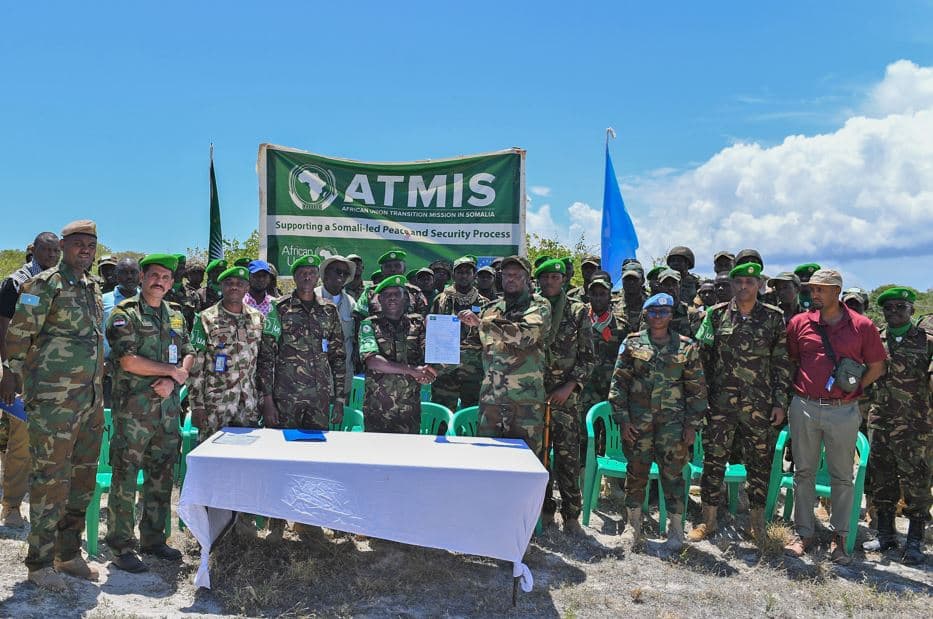Loading News Article...
We're loading the full news article for you. This includes the article content, images, author information, and related articles.
We're loading the full news article for you. This includes the article content, images, author information, and related articles.
Kenya is enhancing its drone defence capabilities and regulatory framework in response to increasing regional security threats and global incidents involving unmanned aerial vehicles (UAVs).

Nairobi, Kenya – Kenya is significantly upgrading its drone defence strategies and regulatory measures, driven by a surge in regional security threats and recent international incidents involving unmanned aerial vehicles (UAVs). The heightened focus comes as European nations grapple with drone incursions near military bases and airports, underscoring a global shift in aerial security concerns.
The Ministry of Defence is expected to play a more central role in approving drone operations and procurements, reflecting a national security imperative. This follows a global trend where drones are increasingly being used for both surveillance and potential attacks by non-state actors.
Kenya has experienced direct threats from drone technology, notably in January 2020 when Al-Shabaab utilised drones for intelligence gathering during an attack on the US military base in Manda Bay, Lamu, which resulted in the deaths of three Americans. More recently, in February 2025, Somali National Army forces intercepted two Al-Shabaab drones conducting reconnaissance over Galgaduud, further highlighting the persistent threat.
The Kenyan government has been actively modernising its military, with significant investments in advanced weaponry, including drones and counter-drone systems. In 2024, Kenya's military spending reached KSh 166.08 billion, a 12.7% increase from 2023, partly to acquire modern warfare tools. This includes the acquisition of six Bayraktar TB2 unmanned combat aerial vehicles from Türkiye, aimed at boosting counter-terrorism efforts against Al-Shabaab. Additionally, Kenya is set to receive a $26 million loan from Israel in July 2025 to acquire the advanced SPYDER missile system, capable of intercepting aircraft, drones, and guided munitions.
The Kenya Civil Aviation Authority (KCAA) governs drone operations in Kenya under the Civil Aviation (Unmanned Aircraft Systems) Regulations, 2020. These regulations mandate registration for all drones, require operators to obtain a Remote Pilot License (RPL) for commercial use, and prohibit flights above 400 feet (120 meters) or within 50 meters of individuals, vessels, or vehicles not part of the operation.
Crucially, flying drones near airports, military bases, government buildings, and other sensitive installations is strictly prohibited without special permits. The KCAA also requires approval from the Ministry of Defence for those intending to test, operate, or procure UAVs, particularly due to security concerns. Civilian ownership or operation of military-specification drones is prohibited.
The Kenya Defence Forces (KDF) have increasingly integrated drone technology into their operations, particularly in Somalia under the African Union Transition Mission in Somalia (ATMIS). In September 2025, 18 Kenyan soldiers received training in Dhobley District on using small UAVs for surveillance and threat detection around their bases. Colonel Morris Wasomi, KDF operations commander in Dhobley, emphasised that drones are crucial for gathering accurate information and preventing threats.
Despite the growing adoption of drones by the KDF, there have been past reservations regarding foreign drone operations within Kenyan territory. In October 2020, then-President Uhuru Kenyatta explicitly stated that Kenya would not accept US drone strikes on its soil, asserting that the country had sufficient internal mechanisms to combat terrorism.
The proliferation of drone technology, particularly its weaponisation by non-state actors, poses significant risks to national security. While Al-Shabaab has primarily used drones for reconnaissance, there are concerns they may expand their usage for broader surveillance and potentially weaponised attacks. The affordability and accessibility of hobbyist drones make them attractive for nefarious purposes, including disrupting critical infrastructure like airports and communication networks.
The ongoing incidents in Europe, where unidentified drones have caused airport closures and raised fears of hybrid warfare, serve as a cautionary tale for Kenya. Security experts highlight that such incursions, even if not overtly hostile, can demonstrate vulnerabilities and strain resources.
While Kenya has invested in advanced drone technology for its military, the full extent of its counter-UAV capabilities and rapid response capacity against sophisticated drone attacks remains a subject of discussion among security analysts. Some argue that Kenya's defence posture, while modernising, still leans heavily on conventional methods, potentially leaving gaps against evolving drone threats.
The balance between fostering innovation in the drone industry—which Kenya aims to lead in Africa—and implementing stringent security regulations to prevent misuse is a continuous challenge.
Observers will be keen to see how Kenya integrates its newly acquired drone and counter-drone technologies into a comprehensive national security strategy. The ongoing development of the regulatory framework by the KCAA, in collaboration with the Ministry of Defence, will be critical in balancing innovation with security. Further, the effectiveness of these measures in mitigating threats from non-state actors, particularly along Kenya's borders with Somalia, will be closely monitored.
Keep the conversation in one place—threads here stay linked to the story and in the forums.
Other hot threads
E-sports and Gaming Community in Kenya
Active 6 months ago
Popular Recreational Activities Across Counties
Active 6 months ago
The Role of Technology in Modern Agriculture (AgriTech)
Active 6 months ago
Investing in Youth Sports Development Programs
Active 6 months ago